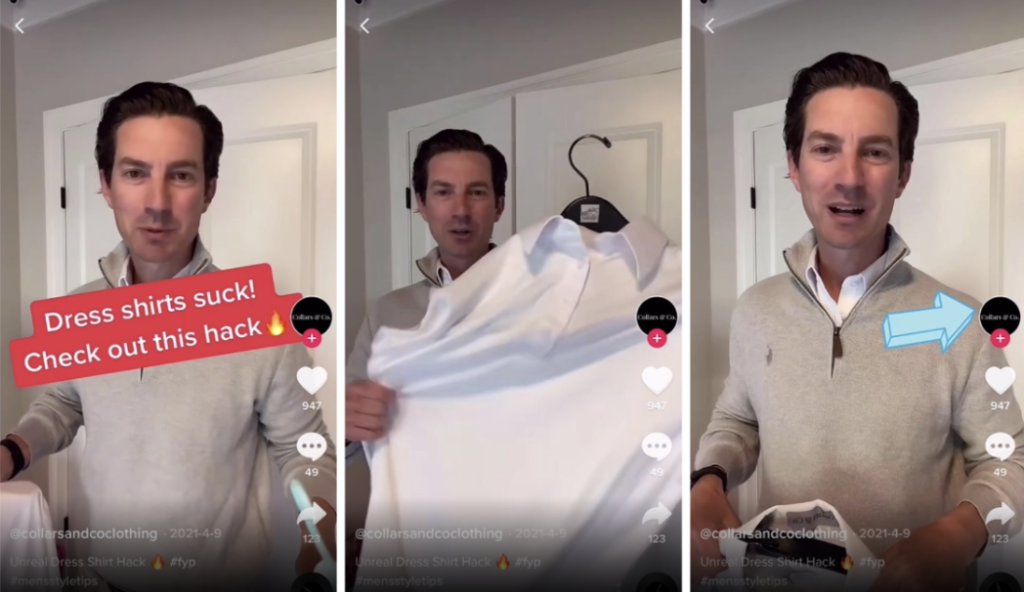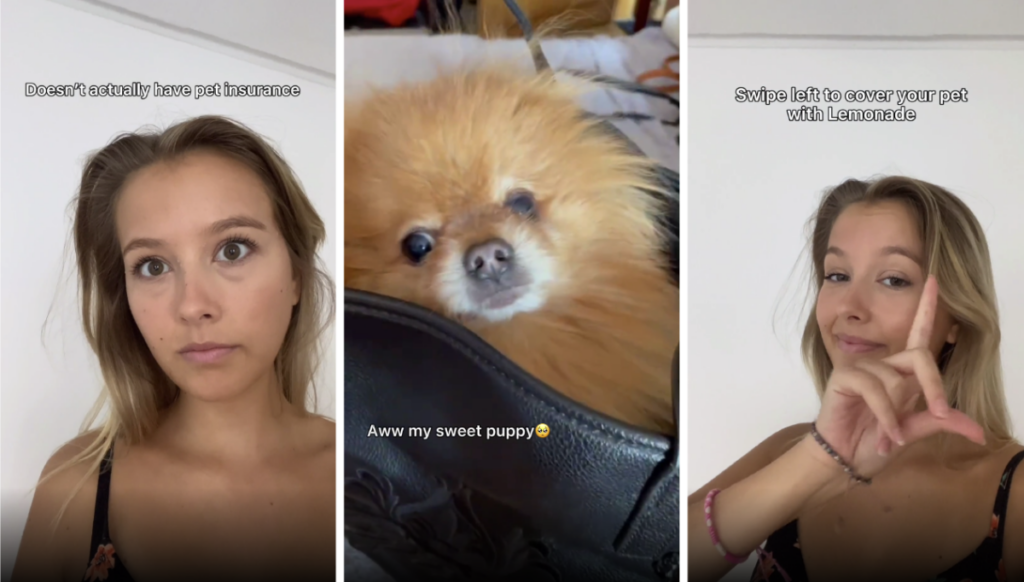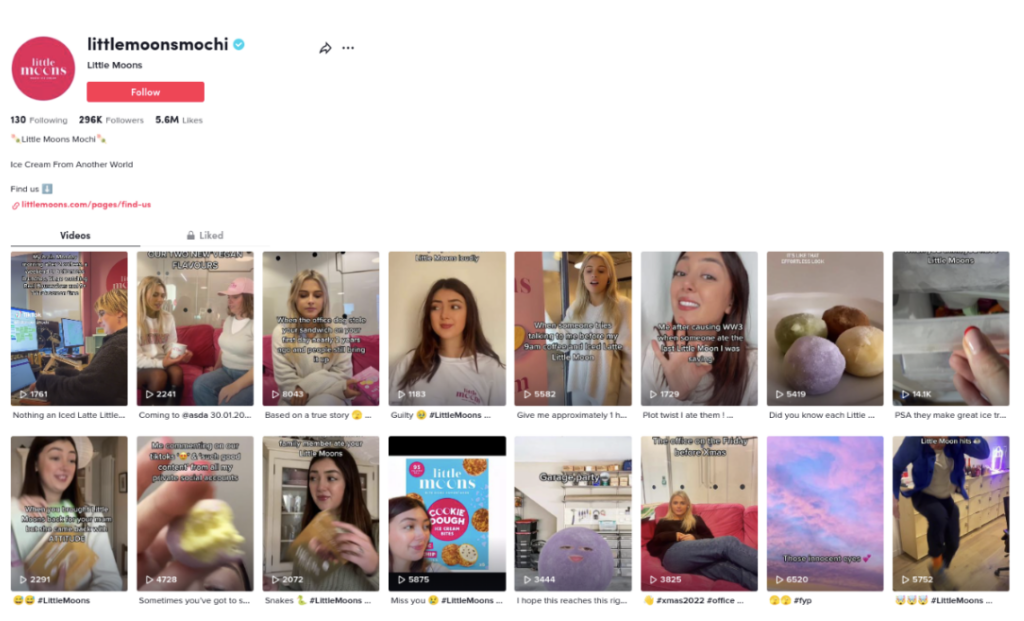
A solid, data-driven media buying strategy is the driving force behind any successful marketing campaign. Effective media buying will enable you to reach high-value audiences, scale up conversions, and reduce acquisition costs. When you’re maximizing the effectiveness & efficiency of your campaigns, everything else will fall into place.
But smart media buying isn’t just about purchasing ad inventory.
It’s about leveraging the right data points, implementing a consistent strategy, and making crucial adjustments that deliver outstanding results. In this guide, we’ll be outlining 13 proven media buying tips that will help you achieve your marketing objectives and generate optimal returns from your budget.
1. Define clear & measurable campaign objectives
Before you dive into any granular media buying tactics, you’ll need to establish clear and realistic objectives for your campaign.
Without measurable objectives in place, you’ll struggle to implement the right optimizations and gauge the success of your ads.
Clarity is key here, as vague objectives will be very difficult to track. For example, rather than aiming to just ‘increase clicks’ to your website, you might aim to exceed your benchmark CTR by 10% or increase average click volumes by 20%. Your objectives should also be easy to measure. Confirm the data sources you’ll be using to track performance (e.g. Google Analytics, Facebook Ads Manager) and make sure you’re confident accessing them and downloading reports.
Finally, don’t be afraid to break down wider business objectives into more manageable campaign KPIs. By clearly defining individual goals (e.g. boosting reach, improving CTR, increasing conversions) and frequently reviewing progress, you can avoid feeling overwhelmed, celebrate smaller milestones, and make in-flight adjustments to strengthen performance.
2. Cherry-pick platforms that align with your target audience
One of the most important aspects of media buying is reaching your target audience in the right digital environments. It doesn’t matter if you’re launching next-level creatives or making diligent optimizations – if your audience isn’t available on a certain platform, you won’t be able to achieve the best results!
Start by defining clear audience personas using insights from social media platforms, market research, and your own customer data. What does your target audience look like in terms of their demographics, interests, and behaviors?
Once you have a better idea of your target audience, you can begin to identify the right platforms to reach them on.
For example, if you’re looking to target Gen Z shoppers, TikTok is likely to provide you with strong reach. However, if your target audience is business professionals and decision-makers, then LinkedIn is the place to be. You’ll also need to consider the targeting capabilities of your chosen platforms.
Is broad demographic targeting right for your audience? Or will you require more granular, in-market targeting to reach your ideal customers? The more you know about your desired audience and targeting requirements, the easier it will be to identify the most effective platforms.
3. Approach every campaign with a test & learn strategy
Frequent, data-fuelled testing will be a game-changer for your ad campaigns.
By regularly experimenting with different creatives, audiences, and tactics, you can gather invaluable insights that will allow you to fully optimize your media buying.
For instance, by comparing the conversion rates of two different audience segments, you’ll be able to figure out where to invest your budget to achieve superior results. Not only will this help you to reduce inefficient impressions, but it will also enable you to increase revenue and optimize your strategy.
To ensure that you’re launching effective tests and harvesting useful data, you should always:
- Set clear and measurable KPIs to compare between test variables
- Allocate sufficient test budgets for different creatives, audiences, etc
- Avoid testing too many variables at once to prevent confusion
- Ensure that you have equally sized sample groups/audiences
- Make optimizations based on what the data is telling you
As you consistently test different tactics & audiences, you’ll be able to discover high-performing strategies and refine your media buying.
4. Make consistent, data-driven optimizations
While the word ‘optimize’ is thrown around a lot in the world of digital marketing, the importance of effective optimizations should never be underestimated.
If your media buying strategy is fuelled by rigorous optimizations, you’ll be in a much better position to achieve your marketing objectives and improve performance.
But how can you ensure that you’re implementing the right optimizations? Firstly, always focus on your primary objective/KPI when making campaign optimizations. If your main goal is to generate website traffic, for instance, then you’ll need to prioritize metrics like clicks and CTR rather than video views.
Patience is also crucial whenever you’re making optimizations.
Whether you’re advertising on the Google Display Network or Instagram, give the platform algorithm time to adjust to any changes. It can take a few days for new optimizations to make an impact, so don’t panic if you’re seeing fluctuating results or slow progress initially. (However, while patience is important, you’ll also need to make decisive optimizations when the data is clear. Don’t hesitate to cut underperforming ads and shift your budget towards better-performing tactics!)
5. Transform raw data into practical insights with analytics tools
There’s a huge difference between just checking your performance data and truly analyzing your performance data. Interpreting raw data, and transforming it into actionable insights, is critical for successful media buying. Rather than just looking at numbers on a screen, you’ll need to figure out how you can use them to discover new tactics and optimize your campaigns.
For example, let’s say your latest campaign delivered an average CPA of $10.
Without context, it’s very difficult to know what this number means. But let’s say that your previous campaign delivered an average CPA of $20 – well, you’ve now successfully reduced your CPA by 50%, proving the success of your media buying strategy.
Contextualizing data is incredibly important, whether you’re comparing results year-on-year or looking at industry benchmarks. Always put your reporting data in context! On top of this, try to figure out which elements are driving improvements or issues with your campaigns. A declining CTR is obviously bad news, but if you can attribute this to a new creative headline, you can make adjustments to try and reverse the trend.
Calculating additional metrics can help you to extract highly valuable insights from your campaign reports. For example, comparing total conversions between different audiences can be useful, but calculating the ROAS of these audiences will give you a much better understanding of customer value and marketing efficiency.
If you’re looking for a fast and easy way to drill down to these actionable insights, analytics tools are a fantastic option. These tools are designed to inject much-needed automation into your reporting process, so you can instantly access key metrics like CPA and ROAS. Once you’ve discovered an analytics tool that you’re comfortable using, you can set up custom reports, review cross-channel performance, and connect different data sources (e.g. Facebook Ads and Google Analytics) to build a clearer picture of performance. With all of your campaign data accessible through a single dashboard, it becomes much easier to optimize your media buying and increase ROI.
6. Keep your ears to the ground on the latest platform evolutions
The world of digital marketing is constantly shifting, and to maintain high-performing media buying, you’ll need to stay ahead of the curve.
New audience trends, advertising tools, and platform features are always emerging across marketing networks. Advertisers who react quickly to these changes and capitalize on new opportunities can often find themselves gaining a competitive edge. These platform evolutions can also have a major impact on campaign management & marketing performance. For example, the iOS 14.5 update was hugely disruptive for Facebook advertisers – while some marketers worked swiftly to find effective workarounds, others were left in the dust.
To stay up-to-date with the latest developments, be sure to keep an eye on industry news and actively look for product releases.
Sign up for digital marketing newsletters, keep in touch with platform account managers, and set up news alerts wherever possible. Although keeping up with the ever-changing world of digital marketing is a daunting task, if you can keep your finger on the pulse, you’ll have a great chance of seizing new opportunities – and avoiding oncoming disasters.
7. Experiment with multiple ad formats across platforms
So, you’ve launched a successful media buying strategy. You’re seeing positive results with your current ad formats, and things are looking good. Time to sit back and put your feet up, right?
Well, not quite.
While it can be tempting to stick with a proven media buying formula, if you want to consistently attract new customers and maintain efficiency in the long run, you’ll need to broaden your horizons.
Experimenting with different ad formats is a fantastic way to elevate your creative messaging and discover profitable new tactics.
For example, if you’re running an e-commerce store with multiple SKUs, then Facebook’s Advantage+ Catalog ads could help you to skyrocket product sales. If you’re retailing a product with clear and compelling user benefits, then short-form videos packed with UGC will help you to build credibility and generate clicks.
Every marketing platform will offer a unique range of ad formats, designed to help brands achieve different objectives. Not only will experimenting with new formats prevent creative fatigue, but it will also allow you to develop a full-funnel strategy to maximize clicks and conversions across key platforms.
8. Collaborate with external agencies
Crafting, launching, and evolving your own media buying strategy can be very challenging at times. While many marketers like to be in total control of their advertising spend, setting up campaigns, analyzing reports, and implementing optimizations can all be extremely time-intensive tasks.
This is where connecting with external agency partners can be a massive help.
By partnering with expert marketers, you can simultaneously free up resources and dramatically increase ROI. Agency account teams will help you define your target audience, launch cross-platform strategies, and optimize ads to maximize conversions.
Enlisting the help of an agency can also allow you to tap into long-standing platform relationships, meaning you can unlock preferential rates and customer support. On top of this, you’ll also be able to take advantage of in-depth media buying knowledge, as most agencies will employ specialists in everything from paid social to paid search. While there’s undoubtedly a lot you can do to improve the performance of your media buying, sometimes there’s nothing better than discovering the right agency partner.
9. Use ad libraries to keep a close eye on your competitors
The digital marketing landscape is intensely competitive, and you’re likely to be competing with a large number of rival advertisers looking to win over the same audiences.
However, while your competitors can be a nuisance at times, they can also provide you with valuable insights to help you optimize your media buying.
Tools like Facebook Ads Library and TikTok Top Ads are the places to stake them out. These give you an invaluable look at the types of ads other brands are running, and TikTok will even give you an indication of how they’re performing, too.
Not only will this give you fresh ideas for creatives to test, it can also give you a heads-up on competitors who’ve launched new products that expose gaps in your offerings. So, build a list of rival brands and regularly check in on them via platform ad libraries to see if what they’re testing can help you refine your own tactics. You may see a competitor trialing a new ad format or content strategy that’s driving a high level of engagement. Take inspiration from these examples, adapting ideas and leveraging the best elements from competitor campaigns to your own advantage.
10. Tailor your creative assets to different platforms
Every platform is unique, and generic copy-and-paste ad creatives aren’t going to help you stand out in a cluttered market. If your creative assets feel bespoke to your chosen platform and target audience, they’re more likely to resonate with consumers.
For example, short and punchy UGC videos can be very impactful on TikTok, particularly if they capitalize on trending audio snippets or social media challenges. LinkedIn, on the other hand, encourages more polished creative assets – formats like carousels can deliver high levels of engagement, particularly if they contain high-quality, informative visual content.
Below are some of the key creative elements to consider when you’re repurposing assets for different platforms:
- Aspect ratios: Make sure that you’re paying close attention to the technical ad specs for different platforms to avoid stressful (and costly) last-minute edits!
- Video lengths: Ensure that the lengths of your video assets are aligned with platform best practices. For example, while longer-form videos can perform well through YouTube skippable campaigns, they’re unlikely to hold the attention of TikTok users.
- Tone-of-voice: Different platforms attract diverse audiences, so consider who you’re reaching across ad networks and how you’ll address them. Tweak your ad copy and headlines to ensure you’re delivering relevant, appropriate messages.
Whenever you’re launching creatives across multiple networks, think carefully about platform best practices and the preferences of your target audience. Media buying goes hand-in-hand with creative strategy, and if you can get the two working in perfect harmony, the results will speak for themselves.
11. Ensure your ad delivery is aligned with your campaign goals & preferences
Optimizing your ad delivery is one of the best ways to improve the efficiency of your media buying and maximize conversions. However, it can be difficult to know which delivery tactics are going to drive optimal results for your business.
Taking Facebook Ads as an example, let’s look at the ad delivery options available on the platform and explain how each approach can impact your campaigns.
Ad Set Budget Optimization (ABO)
With ABO ad delivery, you’ll set a specific budget against every individual ad set in your campaign. The Facebook algorithm will then optimize delivery within each of these ad sets based on your target audience and objectives. For example, let’s say you’re looking to manually test various audiences, placements, and creatives across multiple Facebook ad sets.
With ABO, everything is controlled and managed at the ad set level. You can track the delivery of each ad set in detail, tweak budgets based on performance, and make ad optimizations in real time.
If you want budget flexibility and the ability to make manual adjustments to your ad sets, ABO is the route for you.
Campaign Budget Optimization (CBO)
Campaign Budget Optimization, on the other hand, is an ad delivery option that allocates and optimizes budgets across multiple ad sets.
You’ll set a campaign-level budget for your activity, and the Facebook algorithm will automatically allocate budget to the ad sets with the best performance. This is a simpler form of ad delivery because you don’t need to make manual tweaks to individual ad sets – instead, you’ll rely on machine learning to manage ad spend across your campaign.
CBO can be especially useful for advertisers managing large-scale campaigns with many different ad sets live at the same time.
While ABO places the emphasis on granular control at the ad set level, CBO places the emphasis on campaign budget fluidity and convenience for advertisers.
The right type of ad delivery depends on your campaign goals and preferences as an advertiser.
Whether you’re keen to retain control of your ad sets or allow the Facebook algorithm to put in the hard yards, make sure you’re comfortable with your ad delivery and happy with the outcomes you’re seeing.
12. Focus on high-performing campaign bidding strategies
The more efficient your bidding tactics are across ad campaigns, the easier it will become to reduce your acquisition costs. The key here is to understand the different bidding options available to you and select the approach that aligns closely with your objectives.
The first decision you’ll need to make is Auto Bid vs Manual Bid.
On marketing platforms like Facebook, you’ll need to decide whether you want to automate your bidding or maintain manual control. With automated bidding, you can select a spend-based approach (maximizing conversions/conversion value) or a goal-based approach (achieving a set CPA/ROAS target.)
You can also opt for a manual bidding approach, where you’ll set manual ad bids rather than allowing the Facebook algorithm to do so. This is often utilized by experienced advertisers with a solid understanding of their conversion values. If you’re unsure of which bidding strategy you should be using, you can always duplicate ad sets and see if automated or manual bids are delivering the most cost-efficient results.
You’ll also need to consider Cost Cap vs Bid Cap within your bidding strategy.
In simple terms, a bid-cap places a firm limit on your cost-per-bid while a cost-cap averages out all of your bids to achieve your desired overall CPA.
If you’re more concerned with limiting the cost of specific actions (e.g. clicks, conversions) then a bid cap will keep your spending under tight control. However, if you’d rather maximize results and stay flexible with your total budget, then a cost cap will help you boost conversions while maintaining a set CPA. Every advertiser is different, and there’s nothing wrong with testing out different bidding tactics to find your best-performing options. Just make sure you’re actively trying to improve performance rather than assuming automated bidding is delivering optimal results!
13. Experiment with Dynamic Creative Optimization
Although it’s crucial to maximize the efficiency of your ad delivery, it’s also hugely important to ensure that your creatives are working as hard as possible for your brand.
However, that doesn’t necessarily mean you need to spend hours tweaking every individual element of your creative assets. In fact, with Dynamic Creative Optimization (DCO) you can automate this entire process to optimize performance. DCO is available on several marketing platforms (e.g. Facebook, Amazon) and while the setup process may vary slightly, the concept is always the same.
DCO enables you to rapidly launch a large number of ad variations, with assets personalized to different audiences and tested at scale to identify the strongest iterations.
Dynamic advertising offers a number of unique benefits, including:
- Cost-effectiveness – since ads are dynamically generated and automatically optimized, you can quickly narrow down your assets based on their efficiency.
- Personalization at scale – everything from your headlines to your CTAs can be adjusted in real-time based on customer responses, interests, and behaviors.
- Effective retargeting – DCO allows you to understand the products/messages that resonate with your audience, so you can optimize retargeting ads to maximize sales.
DCO essentially supercharges the ‘test & learn’ process, enabling you to scale up your campaigns while maintaining ad relevance and cost-efficiency.
However, DCO isn’t necessarily for everyone. The process needs a healthy budget to achieve the scale required for effective testing, and you’ll also need enough products/assets/messages to produce a large number of ad variations. If you’re looking for innovative ways to improve the ROI of your media buying, and you have enough budget available to scale up your ad campaigns, then DCO can deliver exceptional results for your business.
By fuelling your media buying with these proven tactics, you’ll be able to achieve consistently strong results – whatever your objective might be.
Whether you’re looking to grow brand awareness or generate cost-efficient product sales, it all starts with a solid media buying strategy. Focus on clear objectives, tap into as much data as possible, and be ready to make speedy adjustments when needed. Good luck!
Featured image by Bri Tucker on Unsplash
The post 13 Media Buying Tips For More Effective & Efficient Ad Campaigns appeared first on noupe.




